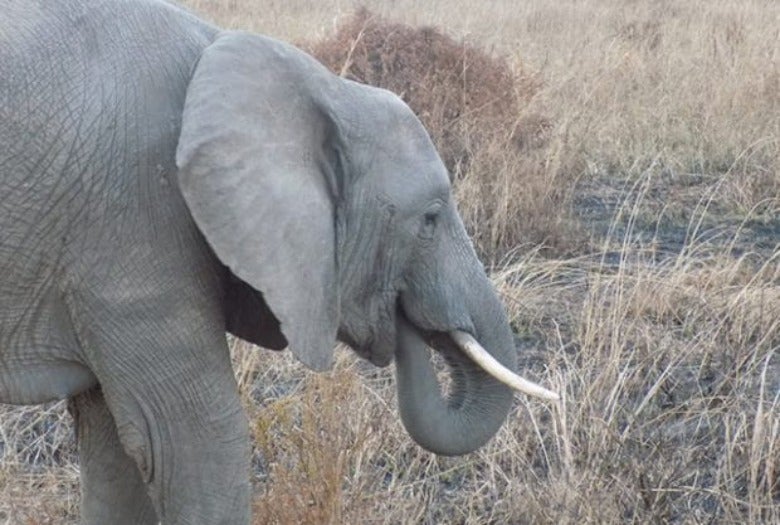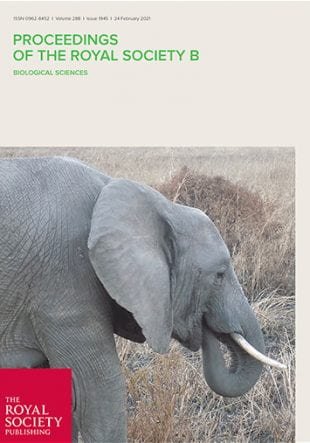HOUSTON - (March 3, 2021) - In one of the first studies of its kind, an analysis of camera-trap data from 15 wildlife preserves in tropical rainforests has revealed a previously unknown relationship between the biodiversity of mammals and the forests in which they live.
Tropical rainforests are home to half of the world's species, but with species going extinct at a rapid pace worldwide, it's difficult for conservationists to keep close tabs on the overall health of ecosystems, even in places where wildlife is protected. Researchers found that observational data from camera traps can help.
"In general, rainforest ecosystems are extremely diverse, and our study shows that mammal communities in rainforests can be predictably different, and these differences may be controlled, in part, by differences in plant productivity in forests," said Rice's Daniel Gorczynski, a graduate student in biosciences and corresponding author of a study featured on the cover of the Royal Society's flagship biological research journal, Proceedings of the Royal Society B.
Gorczynski and more than a dozen co-authors, including his Ph.D. adviser, Rice ecologist Lydia Beaudrot, analyzed camera-trap photos from the Tropical Ecology Assessment and Monitoring Network (TEAM), which uses motion-activated cameras to monitor species trends in tropical forests in Asia, Africa and South America.
Beaudrot, an assistant professor of biosciences, said the study's scientific contributions demonstrates the importance of having the same data collection replicated on the ground in forests all around the world.
"The TEAM data are an incredible resource for basic and applied ecology and conservation," she said. "Given the pace of tropical forest loss, it is more important now than ever to use standardized camera-trap data to understand environmental and anthropogenic effects on wildlife."
For each site, the researchers gathered data about all species of terrestrial mammals with an average body mass greater than 1 kilogram. All the mammal species studied at each site were treated as a single community, and data was compiled for communities with as many as 31 species and as few as five. The researchers also compiled the known functional traits for each species, such as body size, reproductive habits and diet. The combined functional traits of species in a community were used to calculate the community's "functional diversity," or the variety of roles in the forest's overall ecosystem that were filled by that community's species.
"We found that species with unique characteristics — for example, species that are very large or eat unique foods — are relatively more common in forests with high productivity," Gorczynski said, referring to the measure ecologists use to characterize the overall rate of plant growth within a forest. The research also showed that species with unique characteristics were less common at sites with low productivity.
"Higher productivity is thought to make rare resources, like certain food types that unique species often eat, more readily available, which unique species can capitalize on," he said. "And because they are unique, they don't have to compete as much with other species for rare resources, and they can persist at higher abundances."
The species that are considered unique vary by site, he said. Examples include elephants, tapirs and ground-dwelling monkeys.
Gorczynski said this relationship between mammal functional diversity and productivity had not been previously shown.
"Most studies of rainforest mammals rely on range maps, which don't give you an idea of how common different species are," he said. "We were able to find this relationship because we used camera trap observations. The observational data gives us an idea of how common different species are, which allows us to compare the relative abundances of species with different traits."
Study co-author Jorge Ahumada, a wildlife scientist at Conservation International, said the study also shows that destructive human activities, like deforestation, decrease the diversity of species' traits in protected areas.
"We found that in areas where local species extinctions have been documented due to significant deforestation or poaching, such as in Korup National Park in Cameroon, large carnivores like leopards and golden cats are the first to go," Ahumada said. "Without these apex predators, entire food chains can be thrown out of balance. Eventually, populations of smaller herbivores will skyrocket, forcing more competition for the same limited resources."
He said "simply counting the number of species in a tropical forest does not provide a full picture" of biodiversity or ecosystem health.
The researchers said more data science studies are needed to understand the ramifications of local species extinctions and address other fundamental questions in conservation, ecology and wildlife biology.
Additional co-authors include Chia Hsieh and Jadelys Tonos Luciano of Rice; Santiago Espinosa of both the Autonomous University of San Luis Potosí in Mexico and the Pontifical Catholic University of Ecuador; Steig Johnson of the University of Calgary in Canada; Francesco Rovero of both the University of Florence in Italy and the MUSE-Science Museum in Trento, Italy; Fernanda Santos of the Museu Paraense Emílio Goeldi in Brazil; Mahandry Hugues Andrianarisoa of Centre ValBio in Madagascar; Johanna Hurtado Astaiza of the Organization for Tropical Studies in Costa Rica; Patrick Jansen of both the Smithsonian Tropical Research Institute in Panama and Wageningen University in the Netherlands; Charles Kayijamahe of the International Gorilla Conservation Program in Rwanda; Marcela Guimarães Moreira Lima of the Federal University of Pará in Brazil; and Julia Salvador of the Wildlife Conservation Society in Ecuador.
The research was funded by the Gordon and Betty Moore Foundation, HP, the Northrop Grumman Foundation and other donors.
TEAM data was provided by the TEAM Network, a collaboration between Conservation International, the Smithsonian Institute and the Wildlife Conservation Society.
- Peer-reviewed paper
-
Proceedings of the Royal Society B | DOI: 10.1098/rspb.2020.2098
- Video
- Image downloads
-
https://news-network.rice.edu/news/files/2021/03/0302_BIODIVERSE-mn-lg.jpg
CAPTION: An analysis of camera trap data from 15 tropical forests found unique traits may be more beneficial to mammals like the African elephant in areas where plants are highly productive and generate large quantities of biomass. (Photo by Daniel Gorczynski)https://news-network.rice.edu/news/files/2021/03/0302_BIODIVERSE-dg-lg.jpg
CAPTION: Daniel Gorczynski (Photo courtesy of Rice University)https://news-network.rice.edu/news/files/2021/03/0302_BIODIVERSE-lb160-lg.jpg
CAPTION: Lydia Beaudrot (Photo by Jeff Fitlow/Rice University) - Links
-
Conservation International: Conserving wildlife — and the roles they play in nature — to improve ecosystem health
Follow Rice News and Media Relations via Twitter @RiceUNews
- About Rice
-
Located on a 300-acre forested campus in Houston, Rice University is consistently ranked among the nation’s top 20 universities by U.S. News & World Report. Rice has highly respected schools of Architecture, Business, Continuing Studies, Engineering, Humanities, Music, Natural Sciences and Social Sciences and is home to the Baker Institute for Public Policy. With 3,978 undergraduates and 3,192 graduate students, Rice’s undergraduate student-to-faculty ratio is just under 6-to-1. Its residential college system builds close-knit communities and lifelong friendships, just one reason why Rice is ranked No. 1 for lots of race/class interaction and No. 1 for quality of life by the Princeton Review. Rice is also rated as a best value among private universities by Kiplinger’s Personal Finance.




